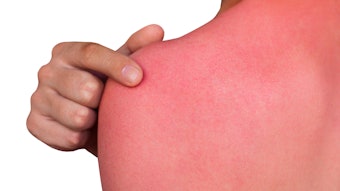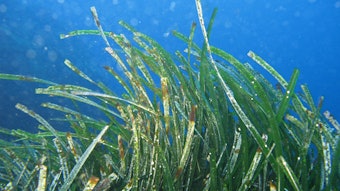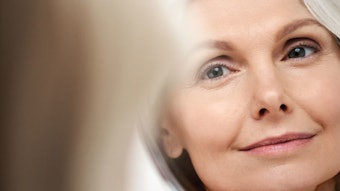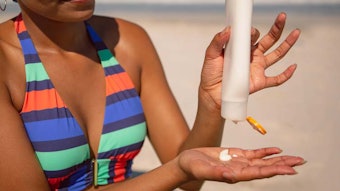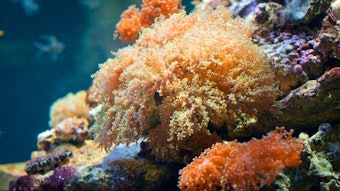!['[Sunscreen] developers will be able to innovate more efficiently while maintaining high standards of quality and safety for consumers.'](https://img.cosmeticsandtoiletries.com/files/base/allured/all/image/2024/06/woman_outside_using_sunscreen_on_face_ISO_test_standards_AdobeStock_783608310.66678a92029d9.png?auto=format%2Ccompress&q=70&rect=62%2C0%2C2135%2C1200&w=700)
Update: Oct. 25, 2024: The Double Plate Method, a fully in vitro sun protection test, has advanced to the final draft stage of the ISO publication process. "This milestone underscores a new era in scientific accuracy and ethical standards for SPF testing," sunscreen test expert Weneos expressed.
Log in to view the full article
Update: Oct. 25, 2024: The Double Plate Method, a fully in vitro sun protection test, has advanced to the final draft stage of the ISO publication process. "This milestone underscores a new era in scientific accuracy and ethical standards for SPF testing," sunscreen test expert Weneos expressed.
Sunscreen testing is on the path to becoming more ethical, cost efficient, reliable (in terms of SPF measurement) and faster thanks to a recent move by the International Organization for Standardization (ISO), a non-governmental organization that develops and publishes international standards. The group has recommended two new test standards for final approval. Here, two experts behind the standards and ISO's approval, Marc Pissavini, Ph.D., sun research lab director, Coty, and Sébastien Miksa, general manager of Weneos (formerly Helioscreen), share insights about the standards and what they mean for sun protection.
As a point of reference, the standards are known as ISO 23675 and ISO 23698, and their endorsement is a monumental achievement, 10 years in the making. The standards are now in the final draft for international standard (FDIS) stage. The final vote, scheduled for September 2024, is expected to seal the deal.
update: Also, as background, Pissavini is chairman of the ISO WG7/TC 217 (ISO working group 7 for standardizations in cosmetic products; in this case, sun protection methods). Miksa's roles related to ISO 23675 were to envision and develop a robotic spreading technique and to publish the in vitro double plate principle that was validated by Cosmetics Europe and ISO group. He also participated in the Ring Test and supported technical aspects of it. For ISO 23698, he reports he mainly challenged the method about technical limits. Beyond these roles, he is also project leader for the ISO 24443 revision.
See archived: Wet Skin Factor for Sunscreens: An In vitro Method, Part I
ISO 23675 (In vitro SPF Testing)
As outlined by ISO, the 23675 in vitro SPF test method is based on UVR transmittance spectroscopy, whereby "spectrophotometric measurement of UVR transmission through appropriate UVR-transparent substrates" allows for the prediction of in vivo SPF values. "This in vitro SPF method revealed a strong reproducibility and correlation with in vivo SPF values," ISO reported.
The method is applicable to sunscreen products in the form of an emulsion or alcoholic one-phase formulation, excluding loose or compressed powder or stick forms. Specifications are given to enable the determination of the spectral absorbance characteristics of SPF protection in a reproducible manner.
"Use of this method is strictly for the determination of a static sun protection factor," ISO noted. "It is not validated for the determination of water resistance properties of a sun protection product."
ISO 23698 (HDRS Sunscreen Testing)
The 23698 method, or hybrid diffuse reflectance spectroscopy (HDRS) method, according to ISO provides "a non-invasive optical assessment of the protection provided by topically applied sunscreen products as measured in situ on human skin as used by consumers, without requiring physiological responses and causing no physical harm to the test subject."
update: In other words, "The ISO 23698 HDRS standard is a hybrid because of the use of in vivo methods for the absorbance value intensity and in vitro methods for the shape," Pissavini explains.
Per ISO, "by combining full spectrum in vitro spectroscopic measurements of the sunscreen with optical measurements of the sunscreen transmission in the UVA on human skin, a hybrid spectrum is derived that provides full assessment of both magnitude and breadth of sunscreen protection in both the UVB and UVA regions of the sun’s spectrum, correlating closely with in vivo SPF and in vitro UVA-PF test results as demonstrated during validation of this test method."
This method outlines a procedure to characterize the sun protection factor (SPF), UVA protection factor (UVA-PF) and critical wavelength (CW) of sunscreen products without requiring biological responses. The method has reportedly been validated for emulsions and single-phase products.
Furthermore, specifications are given "to enable determination of the absolute spectral absorbance characteristics of a sunscreen product on skin to estimate sunburn and UVA protection," the standard states. "It is applicable to products that contain any component able to absorb, reflect or scatter ultraviolet (UV) rays and which are intended to be placed in contact with human skin." This method is presented as an alternative to the ISO 24443 and ISO 24444 methods.
See related (from archive): In Light of Exposure: Understanding Avobenzone Part I, Characterization
[update] Method Recommendations
"As an alternative to the ISO24444, I support and promote the ISO 23675, which is the in vitro double plate method," Pissavini notes. "... I recommend to use the in vitro SPF as this method uses a 'non-human model' (i.e., it is more ethical and has no skin color limitations), improves repeatability and reproduction, and significantly improves speed and cost."
Why ISO's Approval is Exciting
Miksa believes the endorsement of these standards is a major step forward for the industry. "This news is exciting because it represents a major advancement in sun protection testing methods, which will improve the ethical [nature], speed, cost-efficiency and reliability of SPF measurements compared to the in vivo reference method," he wrote.
update: Pissavini adds, "For the first time we have a full in vitro method for the SPF evaluation (ISO 23675) and this method uses a 'non-human model,'' [making it] more ethical [and not subject to] skin color limitation." He furthered that it improves repeatability and reproduction, and significantly improves speed and cost.
Why it Took So Long
"The journey to final approvals took so long due to the complexity of developing methods that are both robust and universally acceptable," states Miksa. "It required extensive collaboration, innovation and numerous validation tests to ensure the new standards met the high accuracy and reproducibility required by the industry."
update: Pissavini elaborates, "The development of an in vitro method with reproducibility and repeatability superior to the in vivo method took a lot of time because we tested and evaluated all the parameters that could have an influence. Several international ring tests were conducted, and the best global experts developed this method in order to propose it to ISO."
How This Will Impact Sunscreen Formulators
"The new SPF testing methods, ISO23675 and ISO23698, will greatly benefit sunscreen product developers," Miksa continues. "These methods offer faster and more cost-effective testing, with improved accuracy and consistency. This will streamline the development process, reduce expenses, and ensure that products provide reliable sun protection. Consequently, developers will be able to innovate more efficiently while maintaining high standards of quality and safety for consumers."update: "The impact on product development with the ISO 23675 in vitro SPF method will be considerable," adds Pissavini. "The analysis time will be reduced from several weeks to a few days, and the cost will drop from several thousand euros or dollars to just a few hundred."
Next Step Toward Final Approval
As stated, the methods are expected to be officially published in September 2025.
update: "FDIS ... is the last stage before the publication of the method," explains Pissavini. "Only editorial comments are allowed, now so the methods are fixed." He adds that while the models are likely to be fully accepted at the end of 2024 or beginning of 2025, "all the major industries are already starting to use or using ISO 23675 (in vitro SPF)."
Pissavini emphasizes, however, that these methods are ISO methods, meaning they are international, but their application is voluntary, so their adoption will depend on each country. "It is very likely that they will be quickly be accepted everywhere except in the USA and Japan."
"Once ISO standards (ISO 23675 and ISO 23698) are published, both methods will be implemented and available for assessing sun protection," adds Miksa. "The acceptance of results or methods is ultimately determined by regulatory requirements."
Per Miksa, in the European Union, according to the Commission Recommendation of Sept. 22, 2006, regarding the efficacy of sunscreen products and the claims made regarding them (2006/647/EC), "these alternative methods will be directly accepted because it clearly states that preference should be given to in vitro testing methods that provide an equivalent level of UVB protection."
Miksa concludes, "The future of sunscreen testing looks incredibly promising, and I'm excited to see these advancements come to life."
update: Pissavini agrees, "Finally, in 2025, we will have a robust alternative method to the historical SPF in vivo method. This is a turning point in the world of photoprotection."
